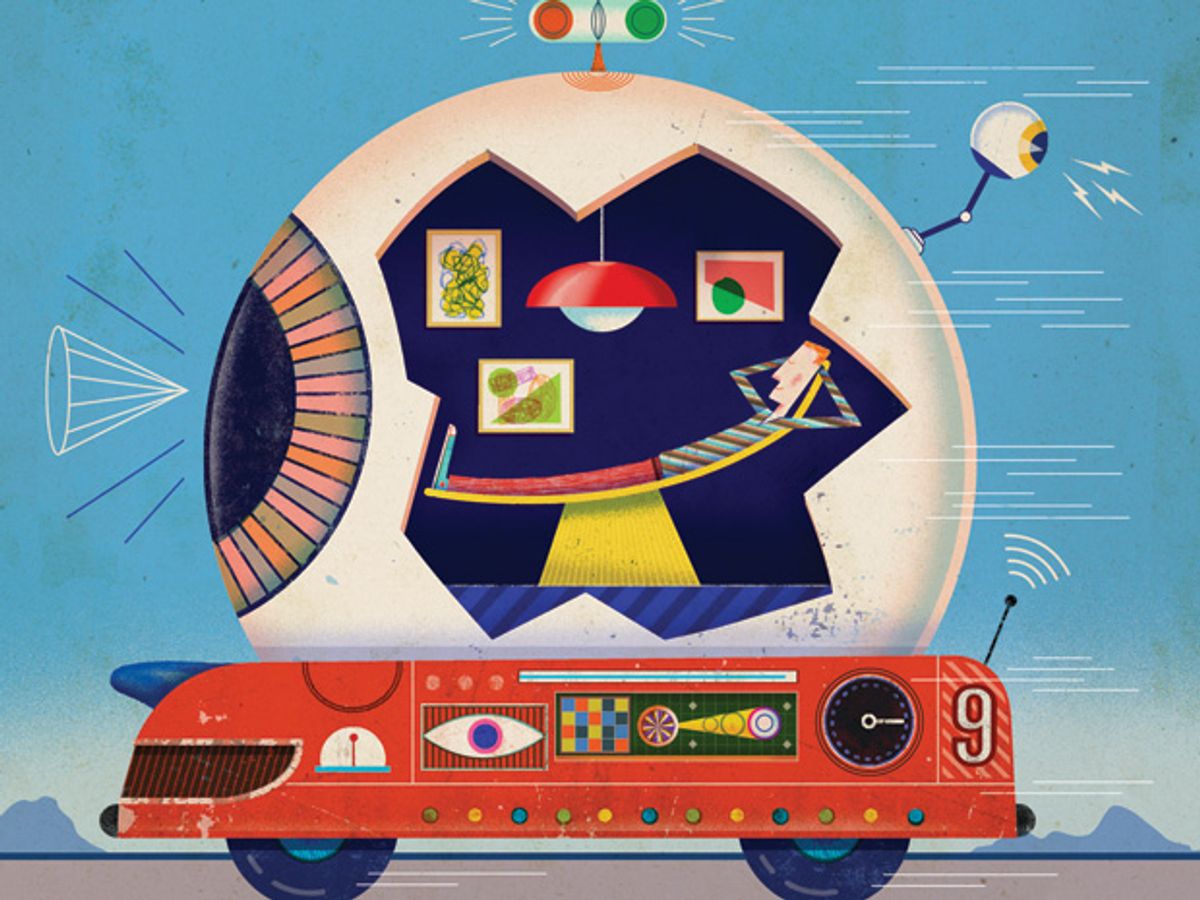Hands-free driving, cars that park themselves, an unmanned car driven by a search-engine company. We’ve seen that movie. It ends with robots harvesting our bodies for energy.
Watch just about any movie or television show set in the not-too-distant future and you’ll soon notice that although there are still plenty of cars on the road, nobody drives them. Or, I should say, no human drives them. From the Johnny Cabs in Total Recall to the sleek Lexus 2054 in Minority Report, in these imagined futures robots and computers have taken over the driving duties.
Science fiction portrays autonomous cars as inevitable, but will we really see them anytime soon? We already have self-parking cars from companies such as BMW, Lexus, and Toyota, in which an onboard sensor detects a suitable parking spot and a built-in computer controls steering, accelerator, and brake to maneuver the car into the spot. But automatic parking (even the neat trick of automatic parallel parking) is a long way from automatic driving, although it might not be as long as you think. Google, famously, has been testing a fleet of cars that can operate in auto-drive mode. Google cofounder Sergey Brin was asked in 2013 when driverless cars might become mainstream, and he replied, “You can count on one hand the number of years until ordinary people can experience this.” With nearly every major car company—including Audi, GM, Mercedes-Benz, Nissan, Tesla, and Volkswagen—testing robotic car prototypes, and with robocars already legal (albeit with restrictions) in California, Florida, Michigan, and Nevada, the fulfillment of Brin’s prediction is probably not far off.
Some are also predicting that we won’t need to own cars when they’re all self-driving. If you can summon a robotaxi in minutes with a few taps on your smartphone, who needs the hassle and expense of car ownership? (Since you in effect “whistle” for such a car, in a high-tech version of whistling for a taxi, robocabs and similar self-delivering vehicles are sometimes called whistlecars.) If this all sounds very Uber-like, know that Uber CEO Travis Kalanick has declared that replacing the company’s current fleet of human-driven vehicles with self-driven vehicles is inevitable and will make the service incredibly cheap because there will be “no other dude in the car” to pay for. A similar idea is the deliverbot (also called the robotruck), an unmanned vehicle for delivering packages and other cargo.
But a car that can drive itself is only the beginning. The long-term vision is to combine smart cars with smart roads. That is, an advanced connected car will drive autonomously, and it will tap into the sensors and beacons that will festoon future roads and highways, leading to the ideal of crash-avoiding or crashless vehicles. This will also enable platooning, in which cars drive at a steady speed and follow each other at a set distance. The resulting car train or road train will be completely controlled by vehicle-to-vehicle (V2V) communication and interaction with the so-called automated highway system (or intelligent transport system). The ultimate goal is an autocar that is so intelligent and so safe that you could fall asleep in it—the pie-in-the-sky, head-on-the-pillow sleeper car.
The cloud of words and phrases surrounding self-driving vehicles is interesting, and the technology itself offers a fascinating glimpse into the near future, but do we really need driverless cars and smart roads and vehicle platoons? Well, let’s look at the facts. Drivers run stop signs, cut off pedestrians, tailgate the car in front, and race the car behind. And they do all this and worse in a fog of barely contained road rage. No wonder more than 32,000 people are killed in traffic accidents every year in the United States alone. Clearly, when it comes to robocars, the future can’t come soon enough.
